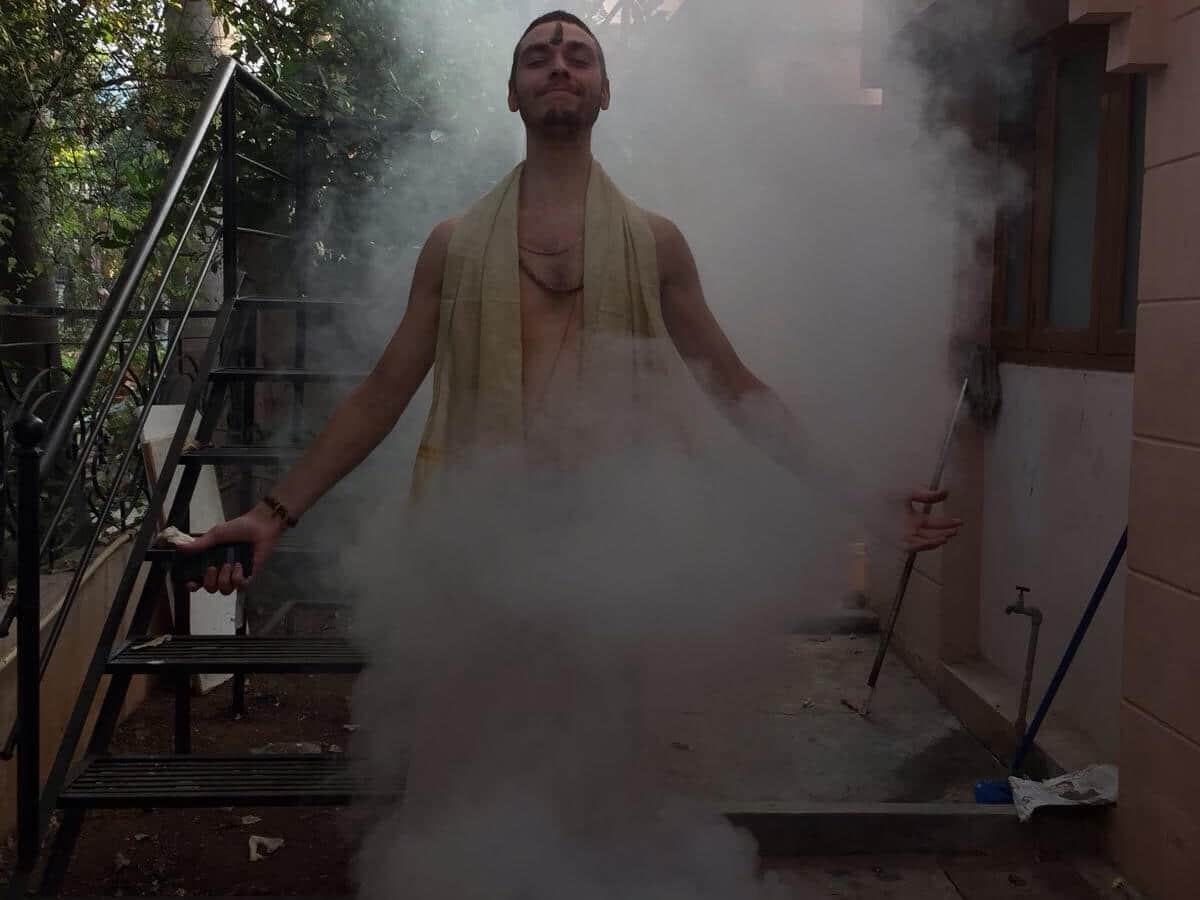Smoke Inhalation Indications:
As per Astanga Samgraha of Vaghbata, Sutrasthana, ch. 30.
- Pains of the head, eyes and ears
- Ophthalmia and heaviness of the eyes
- Hemicranial (persistent unilateral headache)
- Rhinitis, cough, dyspnoea
- Bad taste in the mouth
- Excess salivation, disorder of voice, bad smell from the nose and mouth, hiccup, diseases of the throat
- Toothache, looseness of teeth, loss of appetite
- Loss of movement of the neck and lower jaw
- Worms
- Itching
- Anaemia
- Disorders of the skin and hairs
- Absence of sneezing or excessive sneezing
- Stupor, excess sleep
- Asphyxia
- Diseases of vata and kapha origin affecting the parts of the body above the shoulders.
- It is also used to strengthen and purify the head, scalp, sense organs and the mind.(2)
Kinds of Smoke Inhalation (Dhuma Prakaras)
Though the smoke is derived from drugs which are sheeta virya (cold energy), yet with contact of fire, it becomes ushna virya (heating energy). So Dhumapana aggravates pitta and rakta (blood).
3 kinds:
- Shamama (suppressing) – a.k.a. prayogika and madhyama. – after gandusha, nasya.
- Brmhana (strengthening) – a.k.a. snehana and mrdu.
- Shodana (purifying) – a.k.a. virechana and tikshna. – bad colds etc.(3)
also:
- Kasaghna (anti-coughing)
- Vamana (emetic)
- Vrana Dhupana (fumigation to ulcers).
Persons Unsuitable for Inhalation (Dhuma Anarha)
- Those who have undergone purgation therapy, who have been administered an enema,
- who have kept awake at night
- who are injured in the head
- who have drunk honey, curds, milk, wine, gruel mixed with fatty material, poison and (large quantities of) water, who have eaten fish as food
- those suffering from anaemia, diabetes, enlargement of abdomen, flatulence, upward movement of vata inside the abdomen (reverse peristalsis)
- blindness, rohinika (a throat disease), and all others during hot season.
Administration of smoke to the above will produce giddiness, fever, headache, difficulty in sensory perception, dryness and ulceration of the palate, feeling as though hot fumes are coming from the throat, vomiting, fainting, bleeding diseases, facial paralysis and even death.(4)
In all these diseases, it is pitta alone or in combination with vata and kapha that gets increased. So keeping this in mind, use of ghee, decoction, nasal medication, application of paste into the mouth, eye-salve, pouring medicated water over the body and others which are mixed with fatty materials or not mixed with them and cold (in nature and feeling) should be used.(5)
Especially the smoke entering to all the channels produces severe pain, flatulence, redness of the eyes, dyspnoea, cough, nasal catarrh and sourness in the alimentary tract.
In such conditions, use of ghee, milk, sugarcane juice, grapes and sugar; producing vomiting by similar drugs, nasal medications and mouth gargles with drugs of pungent and bitter taste should be adopted.(6)
Dhuma Kala – Time of Administration:
Prayogika (Shamana) Dhuma:
At the end of:
- the night
- elimination of urine
- elimination of faeces
- cleaning of teeth
- sudation therapy
- nasal medication
- taking of food
- surgical operation
Mrdhu (Brmhana) Dhuma
at the end of:
- sneezing
- sexual intervourse
- laughing
- sitting for long periods
- yawning
- elimination of urine
- elimination of faeces
- washing of teeth
- tarpana
- putapaka (instilling decoction and juice into the eye)
- surgical operation
Tikshna (Shodana) Dhuma:
at the end of:
- nasal medication – (such as Nasya Panchakarma).
- anjana (collyrium)
- vomiting
- bath
- day sleep
At the above periods of time, there will be a mild increase of vata and kapha (hence ideal time for smoke inhalation).(7)
The smoke that has been inhaled through the mouth should be emitted only throughout the mouth but not through the nose because of the risk of disorders of vision.(11)
Dosage: Inhalation is done twice – once during day and once at night.
Snaihika (lubricating) dhuma should be done in bouts of three or four inhalations at a time and continued till all the channels start exuding fluid. It should be taken only once in a day and night.(13) – ghee is added.
Tikshna dhuma should be inhaled only through the nose, in bouts of four each time or till the person feels lightness of the channels. It should be taken 3 or 4 x in one day and night.
Apana (one inhalation) = Aksepa (inhaling, sucking) and Visarga (exhaling, expelling out).(14)
Kasaghna (anti-cough) dhuma is administered in the following way:
- Burning coal devoid of smoke is placed in an earthen saucer and fine powder or pills of the drugs are put on the burning coal.
- Another saucer with a hole in its centre is kept inverted over the first one, so as tallow the smoke only through its holy, to which the smoking tube is attached.
- The patient is asked to take in the smoke through the mouth only; when chest is filled up completely, he should let it out through the mouth itself.
- When the drugs are burnt off, some more powder is placed on the fire.
- The inhalation should be continued till all the doshas are expelled out or till the patient feels lightness of the organs.(15)
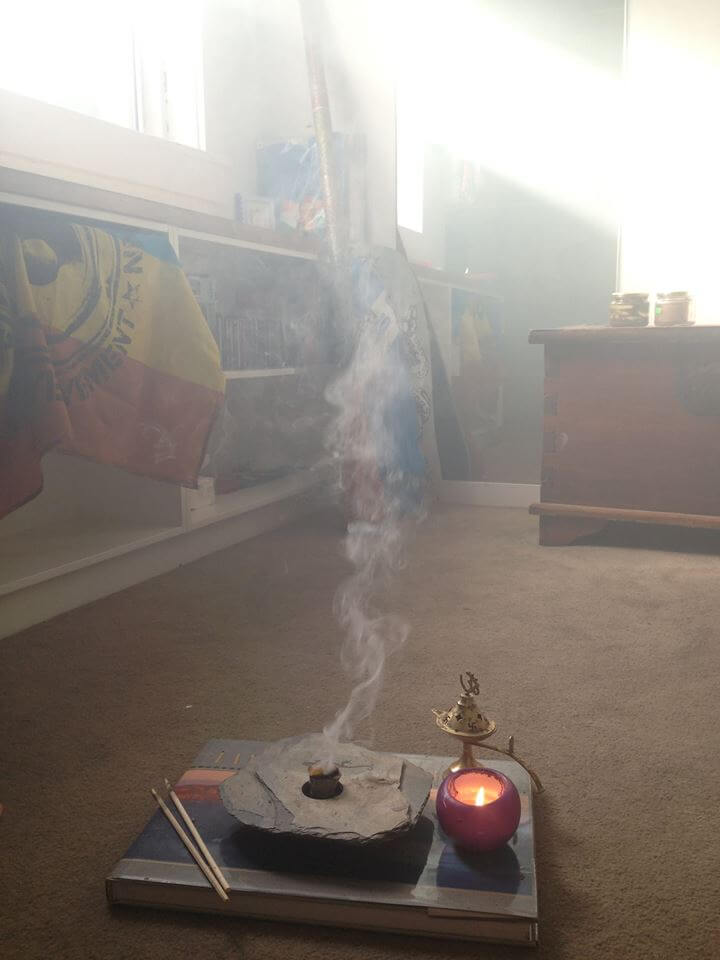
Vamana duma is done in the same manner, but after the patient has taken the drink of thin krisara (porridge).
Even Vrana dhuma (fumigation of ulcers) is done similarly, to cleanse the wound of its exudations and relief from pain.(16) (External application).
Inhalation of smoke therapy properly done, will clear the impurities from the heart, throat and sense organs, produce lightness of the head and mitigation of the doshas and diseases produced by them.(18)
Samana dhuma is indicated to mitigate vata and kapha individually or their combination and also for the healthy.
Brmhana is ideal for (mitigating) vata and Shodana (virechana) for mitigating kapha.(19)
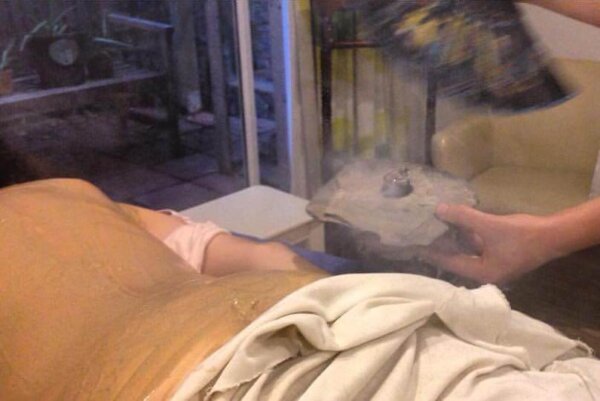
The Relevance of Dhumapana Today
A lot of people these days are practicing unsafe dhumapana.
The use of pipe and direct smoking is unsafe. Furthermore, most dhumapana recipes call for honey, which is a very complex procedure considering heated honey is poison.
Dhumpana may be promoting the habit of smoking harmful substances and/or excess herbal smoking.
If one wants to practice dhumapana, they can create smoke and indirectly inhale the smoke around them. Herbs like guggulu, sambrani, frankincense (all available in raw form at Vital Veda) can be sprinkled onto coal and inhale as well as topically fumigate onto the body. This is also good to burn in the room where new born babies rest for anti-bacterial action. Also smoke from holy and medicinal woods and substances being burned through Yagya ceremony has medicinal action.
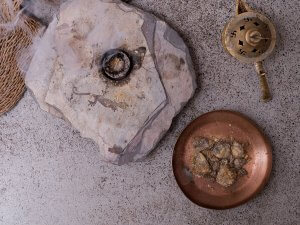
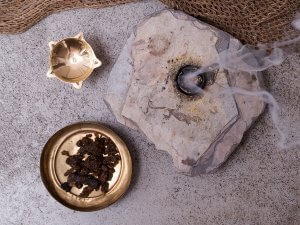
The Relevance of Dhumapana Today
Did you ever try dhumapana? How did you feel afterwards? Comment 👇
Video Player

